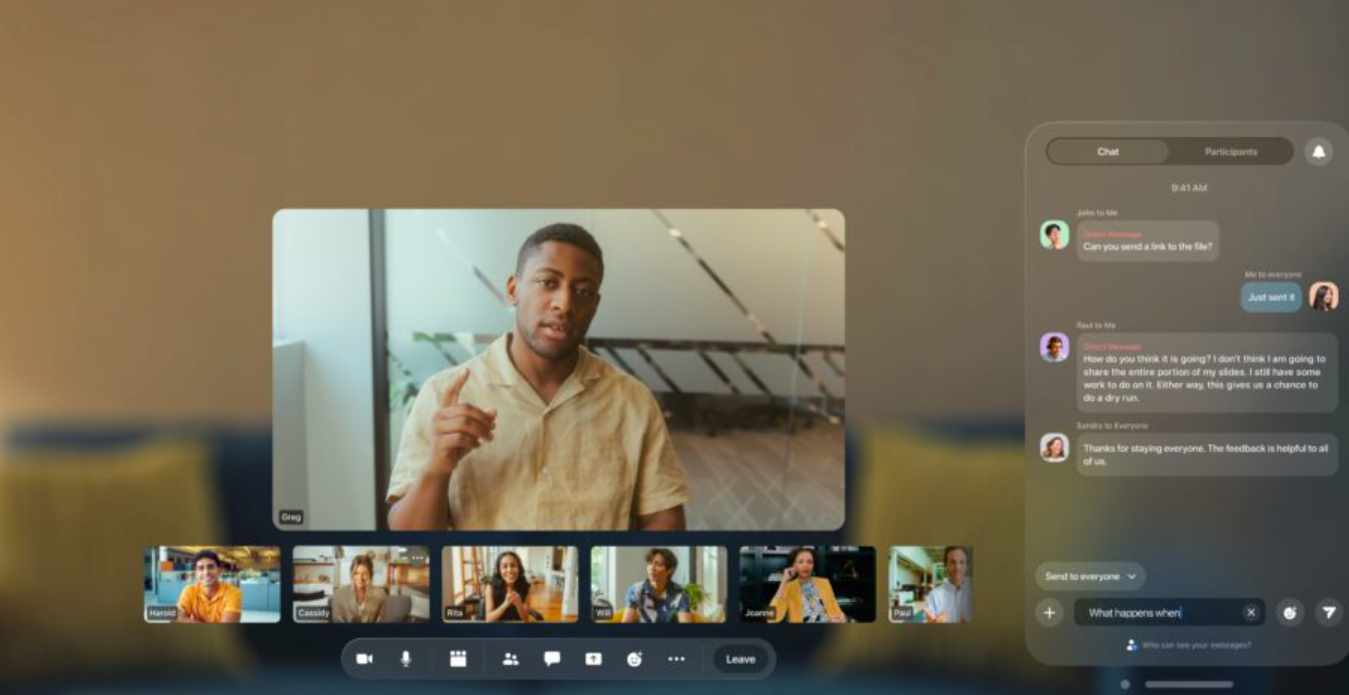With the Apple Vision Pro officially available Feb. 2 much of the focus is on that apps (Netflix, YouTube, Spotify) that won't be on the $3,499 spatial computing device, but for hybrid work three key collaboration applications are worth watching.
Zoom, Microsoft Teams and Cisco Webex are likely to highlight collaboration experiments in spatial computing and potentially lay the groundwork for the future of hybrid work. Box also has created an app for Apple Vision Pro.
Given the price of Apple Vision Pro it's likely to have more appeal in the enterprise in labs for new consumer experiences as well as collaboration use cases.
In a blog post, Zoom outlined its Apple Vision Pro app, which aims to give customers an immersive environment that'll blend virtual and physical space. The app will feature personas, a spatial Zoom experience that will aim for users to feel like they are in the same room as coworkers and upcoming features such as 3D object sharing, Team Chat and the ability to pin up to five Zoom Meeting participants.

Cisco Webex is likely to showcase its Apple Vision Pro app any day now and Microsoft Teams is going to do the same.
- Apple Vision Pro available Feb. 2: Will Enterprises, developers rev expense accounts?
- Apple WWDC 2023: Can Vision Pro headset jump start AR, VR, metaverse for business?
- Apple's Double Tap gesture on Apple Watch sets up Vision Pro UI handoff
For an idea of where Teams may be headed it's worth checking out Constellation Research analyst Dion Hinchcliffe's take on Microsoft Mesh, an experiment in 3D immersive worlds. The experiment is worth watching and Mesh may just indicate what Teams on Apple Vision Pro becomes.
Hinchcliffe wrote:
"Mesh helps workers tap into the power of the unspoken by listening using the spatial dynamics of the physical world. By incorporating spatial audio, Team can now mimic the way sound travels in the real world. This subtle feature could enhance the feeling of being "in the room" with colleagues, allowing you to naturally turn your attention to who's speaking based on the sound's direction. Imagine the natural flow of a conversation where you instinctively turn your avatar towards the colleague raising a question, or the quiet murmur of agreement that ripples through the virtual room as your boss delivers a key point."
In a recent report on trends on visual collaboration, Hinchcliffe noted:
"The convergence of AR, VR, and the metaverse with visual collaboration platforms heralds a new era of digital interaction, blurring the lines between the physical and virtual realms. AR, with its ability to overlay digital information onto the real world, can transform visual collaboration by enabling users to interact with real-world objects and digital data simultaneously."
Are we there yet? Not even close.
There are a bevy of caveats with the Mesh experiment as well as the collaboration apps on Apple Vision Pro. One thing is clear: Enterprise vendors are pondering the next iteration of hybrid work and collaboration. We're not there yet, but the experiments blending physical and virtual environments are worth monitoring.


